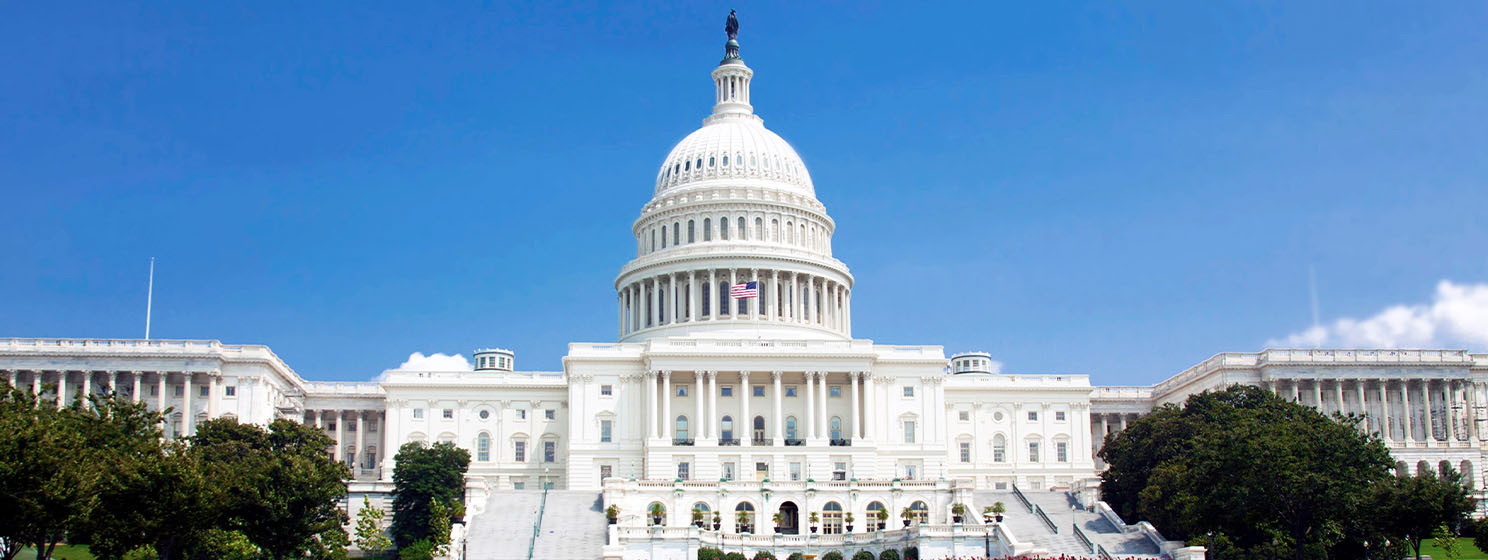|
Getting your Trinity Audio player ready...
|
The United States Senate released its ‘principles’ for digital asset market structure legislation, but a subcommittee hearing proved a dud when virtually no one showed up.
- Senate market structure principles
- Subcommittee hearing a snoozer
- House v Senate legislative strategy war brewing
- Federal Reserve scraps ‘reputational’ risk concerns
- Fed chair fine with stablecoins, other central bankers less enthused
- Fiserv strikes Mastercard stablecoin deal, Circle shares tank
- Bitget/DWF Labs to boost USD1 adoption
The Senate Banking Committee’s Subcommittee on Digital Assets held a hearing Tuesday on proposed crypto market structure legislation, although that legislation doesn’t yet exist.
Ahead of the hearing, the Subcommittee released a set of market structure ‘principles,’ the majority of which are fairly anodyne. These include clearly distinguishing digital asset commodities from securities, assigning distinct lanes of regulatory authority for each (while telling other federal agencies to back off), protecting consumer funds during bankruptcies, and ensuring the right to self-custody digital assets.
There are also recommendations to avoid applying the same rules to centralized and decentralized entities, with additional carveouts for non-custodial software platforms (think coin mixers like Tornado Cash). The House of Representatives offered a similar carveout to decentralized finance (DeFi) operators in their chamber’s Digital Asset Market Clarity (CLARITY) Act, which passed through two House committees last week.
Addressing the thorny issues of crypto-based money laundering and sanctions evasion, the principles suggest efforts to rein in these transgressions “can and should be targeted and pro-innovation.” At the same time, regulators should make it clear to banks that “many crypto-related activities are permissible for banks and other financial institutions, provided they do not threaten the safety and soundness of the institution.”
The Senate also suggests the Securities and Exchange Commission (SEC) should allow “certain digital asset fundraising” that would otherwise fall afoul of the Howey test for identifying securities. The idea here is to allow fledgling crypto projects the ability to conduct initial coin offerings (ICO) to help get these projects off the ground, although history suggests many of these projects don’t have serious ambitions beyond raising money from investors.
Is it still a hearing if nobody’s listening?
Despite the hype, Tuesday’s hearing was a sparsely attended affair, with only five of the 11 members of the Digital Asset Subcommittee present. Those fab five included GENIUS author Bill Hagerty (R-TN), Cynthia Lummis (R-WY), Bernie Moreno (R-OH), and Dave McCormick (R-PA).
The lone Dem in attendance was Maryland’s Angela Alsobrooks, who, like each of her GOP counterparts, holds a ‘strongly supportive’ rating from the Stand With Crypto astroturf group). So, this was definitely not a panel composed of senators looking to learn more about an unfamiliar subject.
The five senators were almost outnumbered by their four invited witnesses, including representatives from Coinbase (NASDAQ: COIN) and Multicoin Capital, along with former Commodity Futures Trading Commission (CFTC) Chair Rostin Behnam and Wharton School director Sarah Hammer. Trouble was, they were so uniform in their messaging that the only real difference of opinion was whether the Senate needs to pass market structure legislation yesterday or last week.
It may have been the lack of a draft bill that deterred more Dem senators from showing up. Or the belief that, following the bait-and-switch amendment brouhaha over the Senate’s stablecoin legislation, the majority’s going to do what it wants regardless. Or simply resignation by those who’d prefer to see a more balanced viewpoint presented to the public on such an important matter.
A House (and Senate) divided
The Senate may be feeling a sense of urgency due to the House being much further ahead on the market structure front. And while President Trump has urged the House to approve the Senate’s GENIUS stablecoin legislation posthaste, House leadership appears willing to defy both the president and the Senate.
On Monday, House Financial Services Committee (FSC) Chair French Hill (R-AR) was decidedly noncommittal when pressed on whether he’d follow Trump’s ‘advice’ or pursue what appears to be the House’s preferred strategy of coupling their own stablecoin legislation (STABLE) with their market structure bill (CLARITY).
On Tuesday, Punchbowl News quoted Sen. Hagerty emphasizing Trump’s desire for the House to pass a ‘clean’ version of GENIUS, saying, “I don’t think we should take a chance of losing this win right now.”
Sen. Moreno said GENIUS had undergone “77 different versions” before its passage last week, and “we don’t want to go through that again.” Sen. Adam Schiff (D-CA) concurred, saying, “it was challenging enough to get to yes” on GENIUS without trying to bolt market structure language to it.
But Politico reported late Tuesday that House leaders think they could have a stable/structure combo on the floor for a vote as early as the week of July 7, although sources said this could be delayed as both chambers wrestle with passing Trump’s ‘big, beautiful’ spending bill.
House Majority Leader Steve Scalise (R-LA) appeared open to the concept of a combo stable/structure bill, claiming Tuesday that the crypto sector supports such a move. But Scalise cautioned that GOP leadership had yet to make any “final decision.”
Regarding GENIUS, Rep. Ann Wagner (R-MO) said the House was still “assessing things” and expressed hope that “we can come to some kind of agreement.” But Wagner added that “we like our House version [STABLE] a great deal.”
De-debanking still a thing
On Monday, the Board of Governors of the Federal Reserve System issued new guidance expunging the concept of ‘reputational risk’ from the list of items its members need to consider when “evaluating the activities” of the state member banks and bank holding companies they supervise.
The crypto sector has long raged against Operation Choke Point 2.0, the conspiracy theory that claims big banks conspired to deny digital asset operators access to banking services. The evidence to date suggests any reluctance by banks had more to do with crypto operators’ unwillingness to conform to practices other sectors had long made peace with, but complaining is easier than complying.
The Fed’s move follows similar guidance from the Federal Deposit Insurance Corporation (FDIC) in February. The Office of the Comptroller of the Currency (OCC) followed suit in March. Around the same time, Sen. Tim Scott (R-SC) introduced legislation to deter the “weaponization of federal banking agencies” by prohibiting regulators from considering reputational risk. Similar legislation was filed in the House of Representatives in April.
But as America’s recent intervention in the Israel-Iran conflict demonstrated, President Trump doesn’t enjoy sitting on the sidelines while others make headlines. On June 24, the Wall Street Journal (WSJ) reported that Trump was considering issuing an executive order threatening banks that decline to accept controversial customers with punitive responses from the federal government.
Individual states, particularly those run by Republican administrations, are already blacklisting banks from state government contracts if they’re deemed to be declining customers affiliated with GOP-friendly causes. Oklahoma, for example, has cracked the whip on JPMorgan (NASDAQ: JPM), Bank of America (NASDAQ: BAC), and Wells Fargo (NASDAQ: WFC) for allegedly discriminating against fossil fuel companies. (Oklahoma is among the nation’s top oil- and gas-producing states.)Federal Reserve Chair Jerome Powell was interrogated by the House FSC on Tuesday and Rep. Bryan Steil (R-WI), chairman of the committee’s Subcommittee on Digital Assets, Financial Technology and Artificial Intelligence, asked whether the Fed’s new ‘reputational’ guidance was based on any new info. Powell said no, saying only that the change was “the right thing to do.”
Powell’s okay with stablecoins. Other central bankers, not so much
During Powell’s House grilling, he defended his decision to hold interest rates steady until the full impact of Trump’s tariffs is understood. However, he did offer a thumbs-up for another of Trump’s pet projects, namely, efforts to regulate stablecoins.
Rep. Josh Gottheimer (D-NJ) brought up the subject of stablecoin legislation, leading Powell to declare that “it’s a great thing that bills are moving. We need a stablecoin framework.”
Both the House and Senate bills are focused on so-called ‘payment stablecoins,’ aka tokens used to purchase goods and services rather than just funding swaps for other tokens. But a new report by the Bank for International Settlements (BIS) casts doubt on the belief that stablecoins can ever take the place of fiat currency.
The BIS report, dubbed ‘The next-generation monetary and financial system,’ hails tokenization platforms focused on central bank reserves, commercial bank money and government bonds. However, the BIS claims stablecoins “exhibit some attributes of money” but ultimately “fall short of the requirements to be the mainstay of the monetary system” and thus “may at best serve a subsidiary role” in global finance.
The report identifies three key tests: integrity, singleness, and elasticity. Stablecoins’ pseudonymous nature has led to widespread use in illicit activities, thus performing “badly” on the integrity front. Stablecoins “often trade at varying exchange rates, undermining singleness,” while their elasticity is undermined by their “cash-in-advance constraint,” the requirement for full upfront payment by holders to add additional tokens to the existing supply.
To help modernize finance, the BIS urges central banks to “articulate a vision of which key features of today’s financial system must be replicated in a tokenized ecosystem” and “provide the necessary regulatory and legal frameworks to ensure the safe and sound development and adoption of tokenized finance.”
Central banks can also provide “the basic foundational assets and platforms required for a tokenized financial system” while fostering “public-private partnerships to encourage joint experimentation and coalesce industry efforts.”
Visa/Mastercard circling Circle
Not everybody seems to have gotten the BIS memo. Just one day after announcing plans for a new stablecoin (FIUSD) and a stablecoin-issuing platform for its banking partners, U.S. fintech outfit Fiserv (NASDAQ: FI) announced a new deal with Mastercard (NASDAQ: MA) to “accelerate mainstream stablecoin adoption.”
The deal will see the credit card giant integrate FIUSD “across a range of Mastercard products and services.” These include allowing merchants to settle transactions in FIUSD, issuing stablecoin-linked cards for use wherever Mastercard is accepted, allowing Fiserv clients to connect to Mastercard’s Multi-Token Network (MTN), and bringing “off-the-shelf support for programmable, on-chain commerce for banks.”
Fiserv’s shares initially shot up on Tuesday’s news, although they later surrendered some of those gains to close at $172.66 (+1.25%).
But USDC-issuer Circle (NASDAQ: CRCL), identified as one of Fiserv’s stablecoin platform partners on Monday, saw its shares take a double-digit tumble on Tuesday, closing at $222.65 (-15.5%).
Circle’s decline was partly blamed on Compass Point analysts, whose initial coverage tagged the stock with a ‘neutral’ rating and a $205 target. Compass Point cited Circle’s limited distribution partners—exchanges such as Coinbase and Binance—compared with the much wider reach of traditional finance (TradFi) operators, many of whom have either already launched their own stablecoin offerings or have signaled their intention to do so down the road.
Circle’s limited revenue-generation capacity and overstuffed market cap have also come in for criticism. Before Tuesday’s decline, Circle’s shares were trading at 100x its earnings, dwarfing the multiples of more established firms (including Mastercard).
Speaking of credit card giants, Visa CEO Ryan McInerney went on CNBC this week and declared that his company has for a long time been “modernizing our own settlement infrastructure with stablecoins” in anticipation of Congress passing bills like GENIUS. Visa has “a whole host of innovations that we plan to deploy around the world embracing stablecoins.”
As if echoing Compass Point’s analysis, McInerney noted Visa’s network of 150 million merchants and billions of customers, adding that “if stablecoins become a mode of currency that people want to embrace around the world, we will enable that on the Visa system and scale that to those billions of endpoints.”
DWF keeps boosting USD1
After weeks of stasis, USDC’s market cap saw an uptick on Tuesday, rising from just under $61.2 billion on Sunday to over $61.9 billion. Over the same span, market leader Tether (USDT) saw its own cap grow by $600 million to a new record high of $156.4 billion.
Not enjoying similar gains is USD1, the stablecoin issued this spring by the Trump family-controlled DeFi project World Liberty Financial (WLF). After spiking to $2.2 billion in April following a $2 billion USD1 purchase by Abu Dhabi’s state-run MGX investment fund, USD1’s cap has been stuck in neutral, despite endorsements from the likes of Justin Sun and his affiliated TRON network and HTX digital asset exchange.
That could change following the announcement of a ‘strategic liquidity partnership’ between the Bitget exchange and market-maker DWF Labs. The deal will see DWF provide “institutional-grade liquidity support” for USD1 in the Seychelles-based Bitget’s spot and derivatives markets. Bitget is the third-ranked exchange in terms of trading volume.
DWF managing partner Andrei Grachev claimed DWF was helping to sure that tokens like USD1 “function reliably across trading environments.” The DWF-Bitget partnership claims to involve “a deeper alignment” between the parties “to support the long-term credibility and growth of stable, tradable digital assets.”
This isn’t DWF’s first USD1 tie-in, having bought $1 million worth of the stablecoin in April to build six DeFi liquidity pools. Around the same time, DWF bought $25 million worth of WLF’s governance token WLFI. Shortly thereafter, the company, which has been accused of wash trading tokens on other exchanges on behalf of its customers, announced plans to open a New York office as part of its “strategic expansion to the United States.”
While the impact of the DWF/Bitget deal on USD1 remains to be seen, President Trump’s claims of having brought the Israel-Iran conflict to an uneasy peace gave a significant boost to the fiat prices of prominent tokens like BTC. Token prices had plummeted over the weekend after Trump confirmed the U.S. had joined the conflict on Israel’s side but word of the ceasefire reversed this trend.
Also enjoying a rise was the president’s own memecoin $TRUMP, which lost ~10% of its value following America’s bombing of Iran’s nuclear sites. After bottoming out below $8.50, $TRUMP has since risen to $9.25.
Blessed are the peacemakers and/or those who buy the dip?
Watch: Breaking down solutions to blockchain regulation hurdle

 12-05-2025
12-05-2025 





